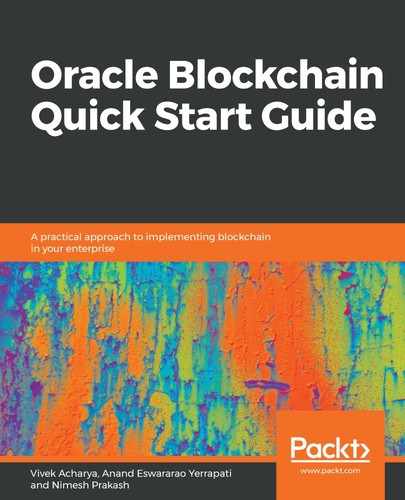With the immense success of blockchain's first application, Bitcoin, and then the emergence of Ethereum and Hyperledger, enterprises, organizations, industry leaders, entrepreneurs, and individuals have realized that blockchain is not a quixotic dream but a true revolution that will propel today's enterprises across industries into a new era of digital enterprises. Various properties of DLT and blockchain can enable decentralized autonomous marketplaces, catalyze the reduction of friction in transactions and reconciliations, allow for the secure maintenance and sharing of decentralized records, and enable consumers and businesses to track the provenance of products, supplies, and documents.
The following is a list of the most important properties of blockchain:
- Shared and transparent access: This results in the consistency of data, which allows participants to access consistent data as updates are replicated across participants. For a permissioned blockchain, it allows only authorized participants to access the data. Transparency enhances auditability and trust in the system and reduces the cost of frauds and audits.
- Immutable: Blockchain is append-only; records cannot be altered or deleted. Immutability enhances confidence in the information that exists on the system and reduces the potential for fraud many times.
- Validated and undeniable transactions: Transactions are added to the blockchain in blocks only after consensus is met. Hence, the validity of the transactions cannot be denied.
- Isolated for confidentiality: With a permissioned blockchain, transactions can be made accessible for views and only updates authorized participants or parties.
- Decentralized: DLT, like blockchain, is a decentralized P2P network with no central authority controlling the network. This results in the elimination of third parties and intermediaries, which further results in the reduction of transaction costs and near real-time execution of the transactions.
- Distributed ledger: All of the participating nodes maintain a copy of the ledger. Hence, reconciliation is not needed as the DLT guarantees data consistency. Since data consistency is guaranteed, the need for reconciliation, dispute resolution, and delays due to dispute resolution are omitted.
- Smart contracts/chaincode: Business logic is authored in smart contracts or chaincodes, which are validated by and shared among the participants, resulting in a high degree of trust in the automated business processes. Any asset can be represented digitally in a blockchain, and transactions are executed as per the business logic defined in those smart contracts or chaincodes.
- Resilience: A trustless ecosystem, robustness, confidentiality, and availability are a few other proprieties we discussed previously.
These properties not only upheave the evolution of various use cases across industries, but also address the perceived challenges of DLT and blockchain. Beyond that, blockchain can be customized to be a permissioned blockchain such as Hyperledger. In a permissioned blockchain, only authorized parties will have access to the blockchain network and can view and update only relevant information and tasks. Although a permissioned blockchain needs meticulous planning, it takes out the apprehension that enterprises have about blockchain. Various BaaSes, such as the Oracle Blockchain Platform (OBP), offer solutions for permissioned blockchain and ease the adoption of permissioned blockchain. Hence, BaaS is essentially catalyzing the adoption of the blockchain revolution.
